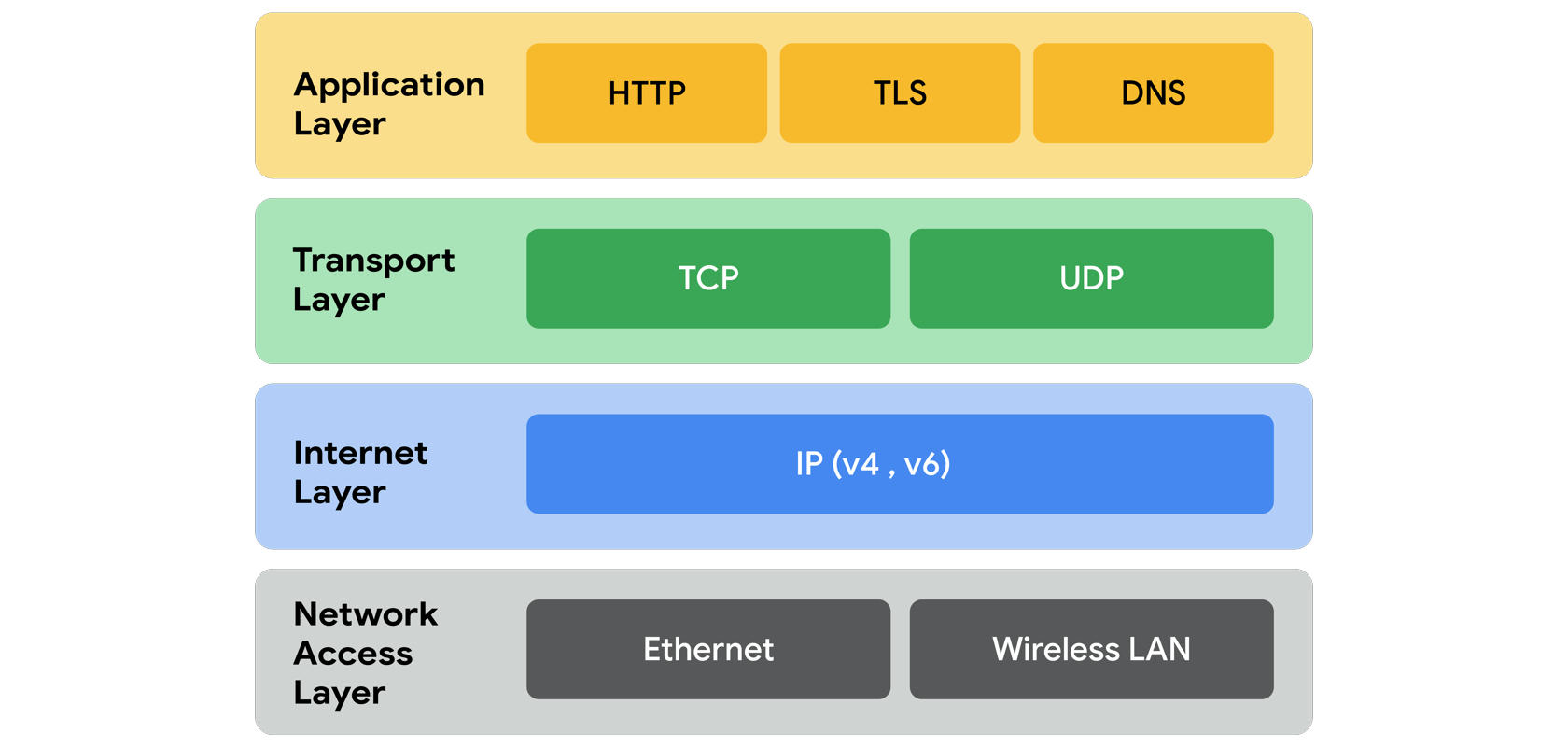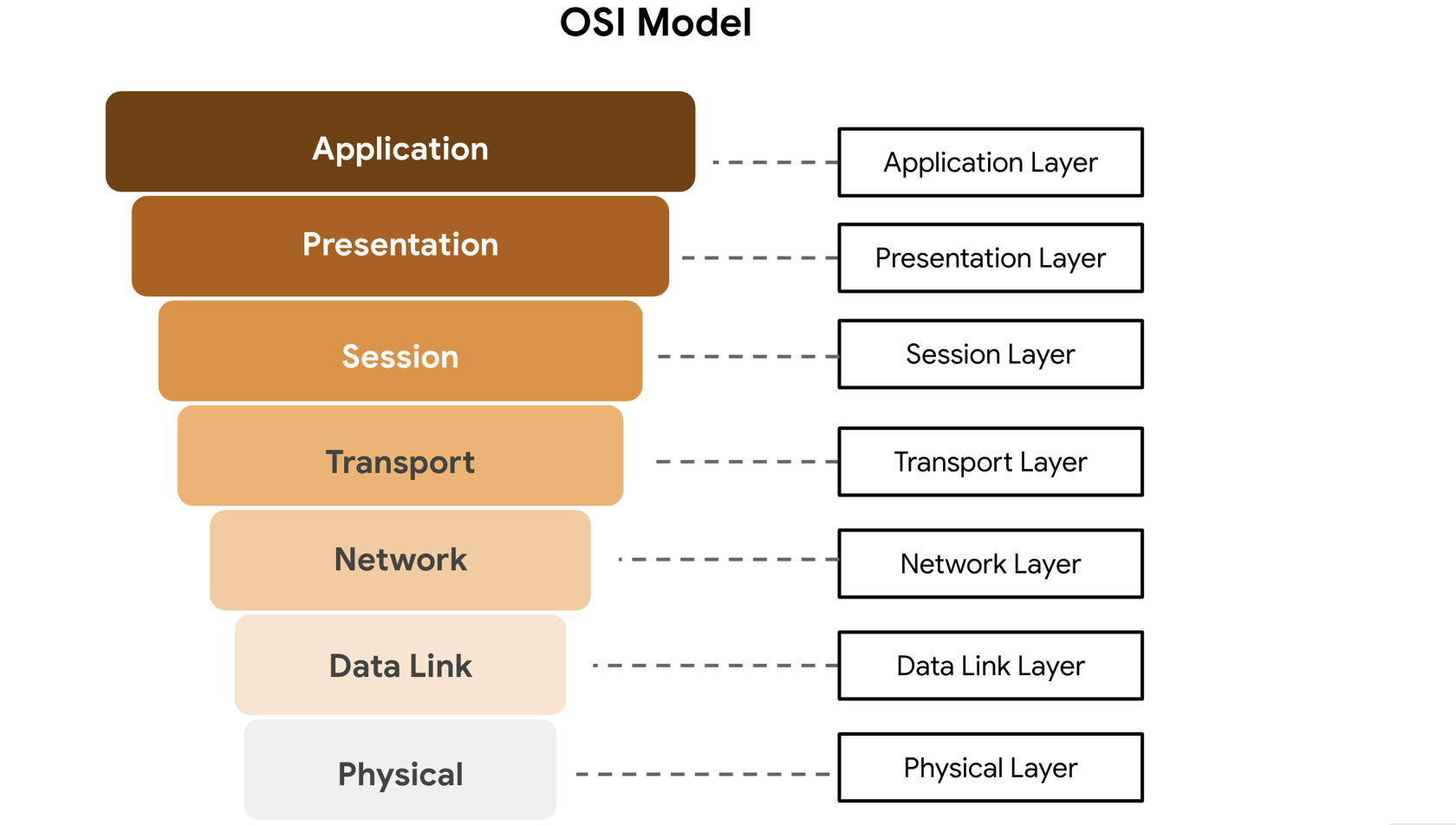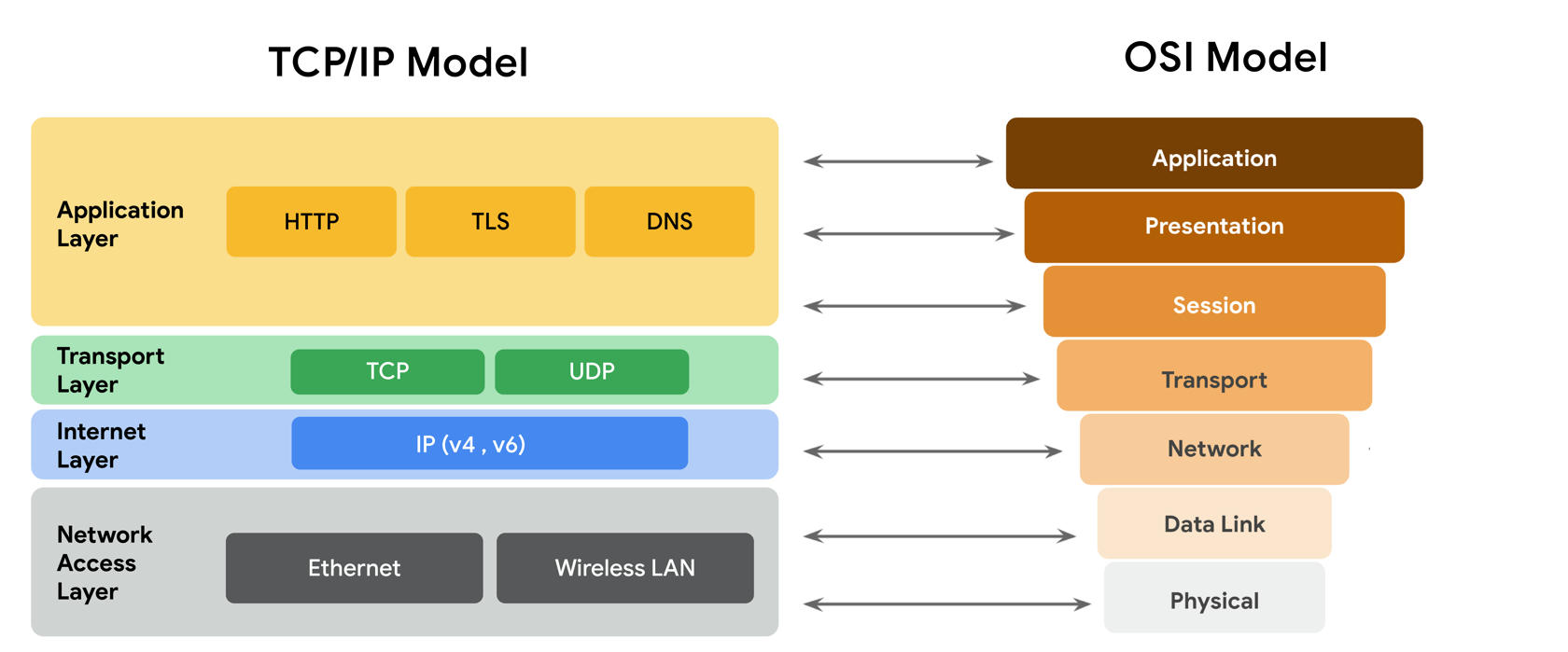Intro to Networks
Website Visitors:Hub Switch Router & Modem
-
Hub: A basic networking device that connects multiple Ethernet devices, making them act as a single network segment. It broadcasts data to all connected devices, which can lead to collisions and inefficiencies.
-
Switch: An advanced version of a hub that connects devices on a local area network (LAN). Unlike a hub, a switch intelligently forwards data only to the specific device that needs it, reducing collisions and improving network efficiency.
-
Router: A device that connects different networks, such as a home network to the internet. It routes data between devices on the local network and external networks, often providing features like DHCP, NAT, and firewall protection.
-
Modem: Modems usually connect your home or office with an internet service provider (ISP). ISPs provide internet connectivity via telephone lines or coaxial cables. Modems receive transmissions or digital signals from the internet and translate them into analog signals that can travel through the physical connection provided by your ISP. Usually, modems connect to a router that takes the decoded transmissions and sends them on to the local network.
-
A wireless access point sends and receives digital signals over radio waves creating a wireless network. Devices with wireless adapters connect to the access point using Wi-Fi. Wi-Fi refers to a set of standards that are used by network devices to communicate wirelessly. Wireless access points and the devices connected to them use Wi-Fi protocols to send data through radio waves where they are sent to routers and switches and directed along the path to their final destination.
In summary, hubs and switches connect devices within a network, routers connect different networks, and modems connect your network to the internet.
LAN vs WAN
LAN (Local Area Network): A network that connects devices within a limited geographic area, such as a home, office, or school. It typically offers high-speed connections and is used for sharing resources like files and printers.
WAN (Wide Area Network): A network that covers a larger geographic area, such as cities, countries, or even globally. It connects multiple LANs and often uses leased telecommunication lines. The internet is the largest example of a WAN.
In summary, LAN is for local connections, while WAN connects broader, more distant areas.
Cloud Networks
A cloud network is a collection of servers or computers that stores resources and data in remote data centers that can be accessed via the internet.
Cloud computing refers to the practice of using remote servers, applications, and network services that are hosted on the internet instead of at a physical location owned by the company.
Few CSP categories:
Infrastructure as a Service (IaaS), Platform as a Service (PaaS), Software as a Service (SaaS), Function as a Service (FaaS), Storage as a Service (STaaS), Database as a Service (DBaaS), Network as a Service (NaaS), Backup as a Service (BaaS), Disaster Recovery as a Service (DRaaS), Desktop as a Service (DaaS), Container as a Service (CaaS), Security as a Service (SECaaS), Monitoring as a Service (MaaS), Identity as a Service (IDaaS), API as a Service (APIaaS), Artificial Intelligence as a Service (AIaaS), Blockchain as a Service (BaaS).
TCP/IP Model
The TCP/IP model, also known as the Internet Protocol Suite, is a conceptual framework used to understand and implement network communication protocols. It was developed in the 1970s and is the foundation of the internet and most modern networking systems. The model consists of four layers, each responsible for different aspects of network communication. Here’s a breakdown of the layers:
-
Application Layer:
- This is the topmost layer of the TCP/IP model. It provides network services directly to end-user applications. Protocols at this layer facilitate communication between software applications and the network. Common protocols include:
- HTTP/HTTPS: Used for web browsing.
- FTP: File Transfer Protocol for transferring files.
- SMTP: Simple Mail Transfer Protocol for email transmission.
- DNS: Domain Name System for resolving domain names to IP addresses.
- This is the topmost layer of the TCP/IP model. It provides network services directly to end-user applications. Protocols at this layer facilitate communication between software applications and the network. Common protocols include:
-
Transport Layer:
- The transport layer is responsible for end-to-end communication and data flow control between devices. It ensures that data is delivered error-free, in sequence, and without losses or duplications. The main protocols in this layer are:
- TCP (Transmission Control Protocol): A connection-oriented protocol that ensures reliable communication through error checking and retransmission of lost packets.
- UDP (User Datagram Protocol): A connectionless protocol that allows for faster data transmission without the overhead of error checking and correction, making it suitable for applications like video streaming and online gaming.
- The transport layer is responsible for end-to-end communication and data flow control between devices. It ensures that data is delivered error-free, in sequence, and without losses or duplications. The main protocols in this layer are:
-
Internet Layer:
- This layer is responsible for addressing, packaging, and routing data across the network. It defines the protocols used for logical addressing and routing of packets. The primary protocol at this layer is:
- IP (Internet Protocol): Responsible for addressing and routing packets of data so they can travel across networks. There are two versions of IP: IPv4 and IPv6, with IPv6 designed to address the limitations of IPv4, particularly in terms of address space.
- This layer is responsible for addressing, packaging, and routing data across the network. It defines the protocols used for logical addressing and routing of packets. The primary protocol at this layer is:
-
Network Interface Layer (or Link Layer):
- The lowest layer of the TCP/IP model, the network interface layer, deals with the physical transmission of data over network hardware. It defines how data is physically sent through the network, including the protocols for the hardware and the methods for accessing the physical medium. This layer encompasses various technologies such as Ethernet, Wi-Fi, and other networking standards.
In summary, the TCP/IP model provides a structured approach to networking, with each layer serving a specific function that contributes to the overall process of data communication.

Source: Coursera - Google CS course
OSI Model
The OSI (Open Systems Interconnection) model is a conceptual framework used to understand and implement network communication between different systems. It divides the communication process into seven distinct layers, each with specific functions. Here are the layers of the OSI model:
Layer 7: Application Layer This layer provides services to end-user applications, such as email, file transfer, and web browsing. It defines how applications communicate with each other, including the protocols they use to exchange data. For example, when you send an email, your email client uses the Simple Mail Transfer Protocol (SMTP) to communicate with the email server.
Layer 6 and 5: Presentation and Session Layers These layers are responsible for preparing data for transmission and managing the conversation between applications.
-
The Presentation Layer converts data into a format that can be understood by the receiving device, such as encrypting or compressing data.
-
The Session Layer establishes, manages, and terminates connections between applications, including setting up and tearing down sessions.
Layer 4: Transport Layer This layer provides reliable data transfer between devices, including error detection and correction. It ensures that data is delivered in the correct order and reassembles fragmented packets. The two main protocols at this layer are TCP (Transmission Control Protocol) and UDP (User Datagram Protocol). TCP is a connection-oriented protocol that guarantees delivery, while UDP is a connectionless protocol that prioritizes speed over reliability.
Layer 3: Network Layer This layer is responsible for routing data between devices on different networks. It provides logical addressing, routing, and congestion control. The Internet Protocol (IP) operates at this layer, assigning IP addresses to devices and routing data between networks.
Layer 2: Data Link Layer This layer provides error-free transfer of data frames between devices on the same network. It ensures that data is delivered in the correct order and reassembles fragmented frames. The Data Link Layer is divided into two sublayers: the Media Access Control (MAC) sublayer, which manages access to the network, and the Logical Link Control (LLC) sublayer, which provides error-free transfer of data.
Layer 1: Physical Layer This layer defines the physical means of transmitting data between devices, such as electrical signals, light waves, or radio waves. It specifies the physical characteristics of the network, including cable specifications, wireless transmission, and network topology.
These layers work together to enable communication between devices on a network. Each layer builds on the services provided by the layer below it, allowing data to be transmitted efficiently and reliably across networks.

Source: Coursera - Google CS course
A simple mapping between TCP/IP layers and OSI model layers:

Source: Coursera - Google CS course
Your inbox needs more DevOps articles.
Subscribe to get our latest content by email.

